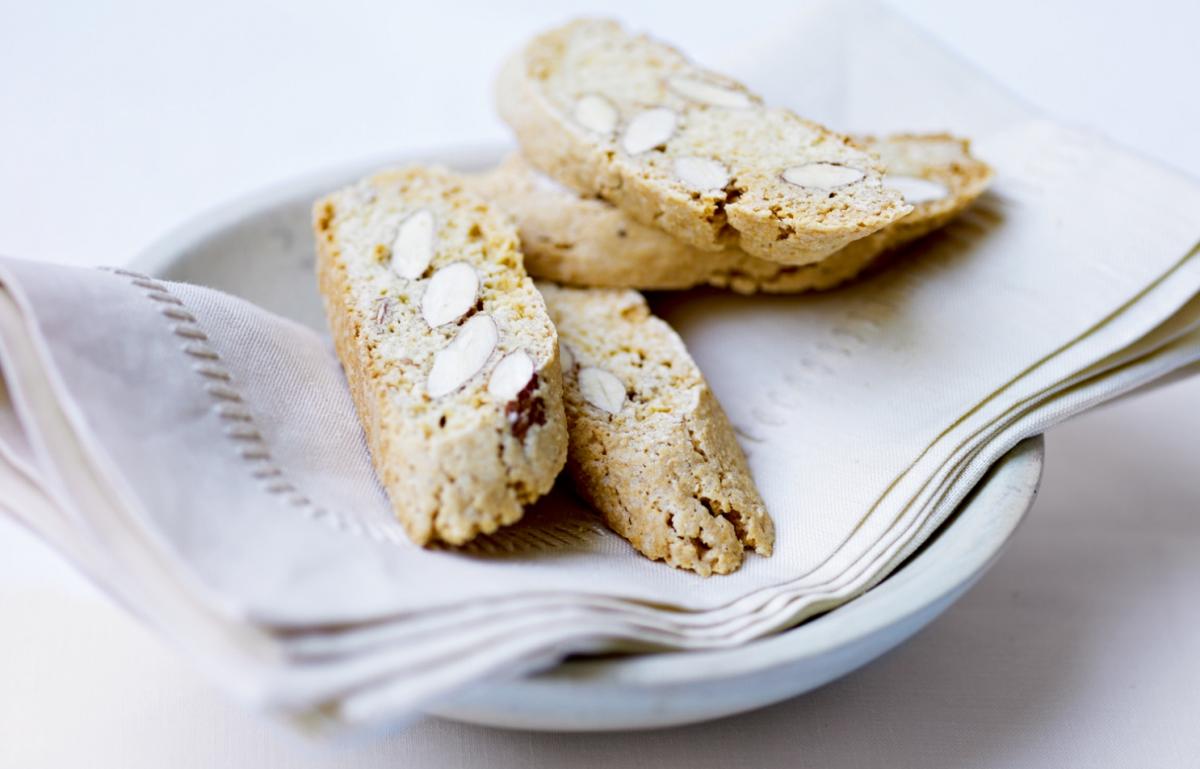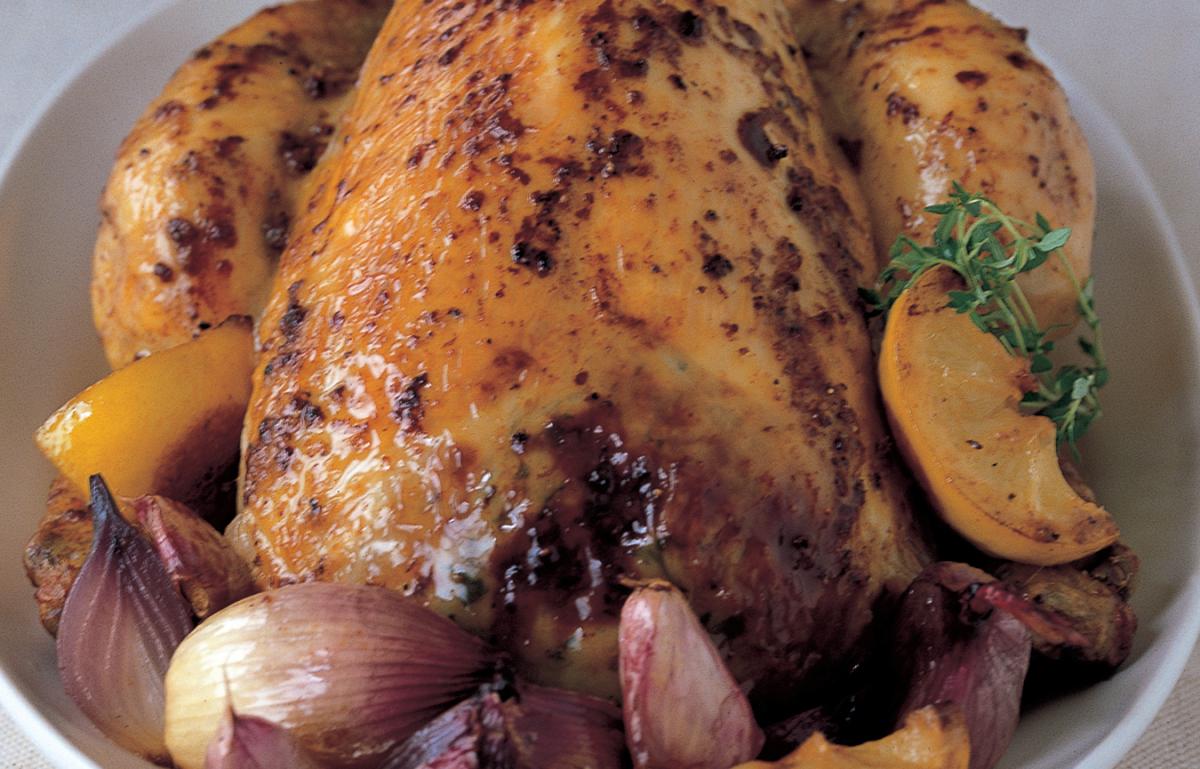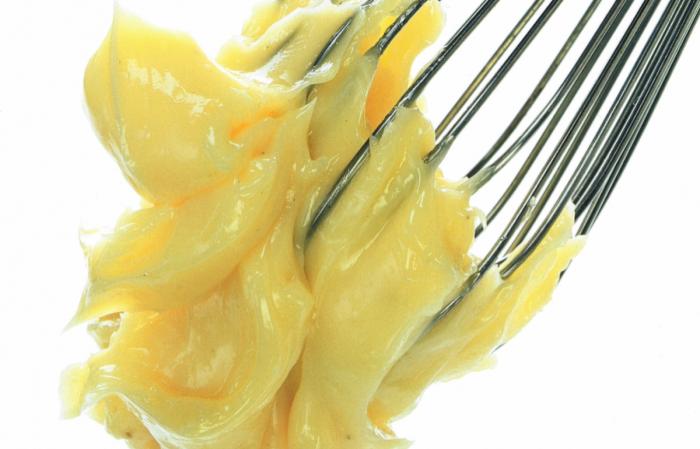


 |
1. In the summer months one of the greatest treats of all is real, proper home-made mayonnaise; a thick mass of unctuous golden ointment, perfect for dipping asparagus into, or slices of raw vegetables (crudités). It makes a perfect accompaniment to salmon, cold or hot, but it is also utterly sublime served with hard-boiled eggs in a classic egg mayonnaise. It should be stored in a screw-top jar in the bottom of the fridge for no longer than a week. |
|
|
2. Begin by putting 2 large egg yolks into a 1½ pint (850 ml) basin with a narrow base – so that the beaters reach all the ingredients all the time. Then add 1 crushed garlic clove (optional) and a heaped teaspoon of dry English mustard powder, which helps to achieve the emulsion that gives mayonnaise its smooth, silky texture, as well as providing flavour. Season with a level teaspoon of salt and a few twists of freshly milled pepper, and mix well together. |
|
|
3. Using an electric whisk in one hand (which is the easiest option, but if you have oodles of energy, you can make mayonnaise with a balloon whisk) and 10 fl oz (275 ml) groundnut oil in a jug in the other, add just one drop of oil to the egg mixture, and whisk that in. Strong flavoured oils are not advisable as they will make the mayonnaise too harsh. It is best to use groundnut oil, but if you want a slightly stronger taste you can add a little olive oil towards the end. Because you are dripping oil in with one hand and whisking with the other, you can steady the jug or bowl by placing it on a damp tea cloth. Whisking each drop of oil in thoroughly before adding the next seems crazy, but it is absolutely essential and, just to reassure you, after a few minutes and several drops of oil later, the mixture will begin to thicken. |
|
|
4. At that stage, and only then, you can begin to add the oil in larger drops – when the mixture has started thickening, the critical point is past (yes, there is a risk home-made mayonnaise will curdle if you add the oil too fast too soon. If that happens, don't despair. Simply put a fresh yolk into a clean basin, add the curdled mixture to that, drop by drop, and then carry on with the remainder of the oil as if nothing had happened). When about half the oil is in, add about a teaspoon of white wine vinegar to thin the mixture down (never use malt vinegar as it is too harsh). Now you can begin pouring in the oil in a thin, steady trickle – whisking the whole time. When it's all in, taste and season with salt and freshly milled black pepper and, if it needs it, a little more vinegar. The amount can never be exact because it depends on your own taste and how much acidity you require. |
|
|
5. If you follow these instructions to the letter, you really won't have a problem but a thick, shining, wobbly proper mayonnaise. I have timed the whole operation from start to finish and it actually takes between 7 and 10 minutes to make 10 fl oz (275 ml) of mayonnaise, so although you think you need oceans of patience, you will be pleasantly surprised. If you'd like the mayonnaise to be a bit lighter, add 2 tablespoons of boiling water and whisk it in. For a quick (though not s |
Follow us Like us on Facebook Follow us on twitter Follow us on instagram Follow us on pinterest Follow us on youtube
© 2001-2024 All Rights Reserved Delia Online